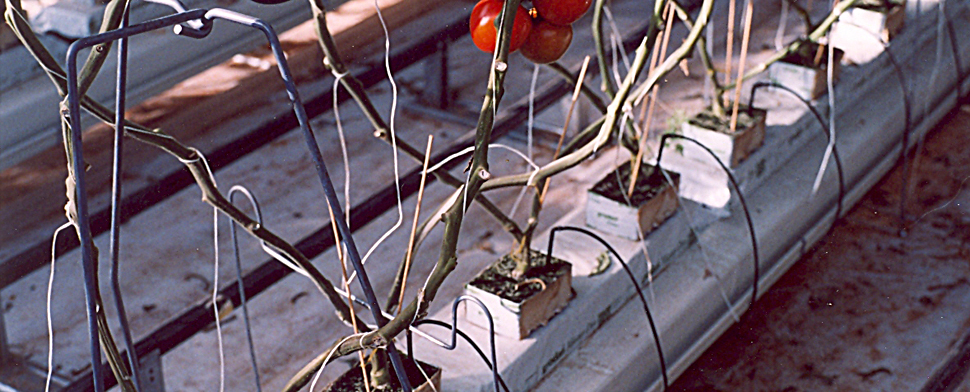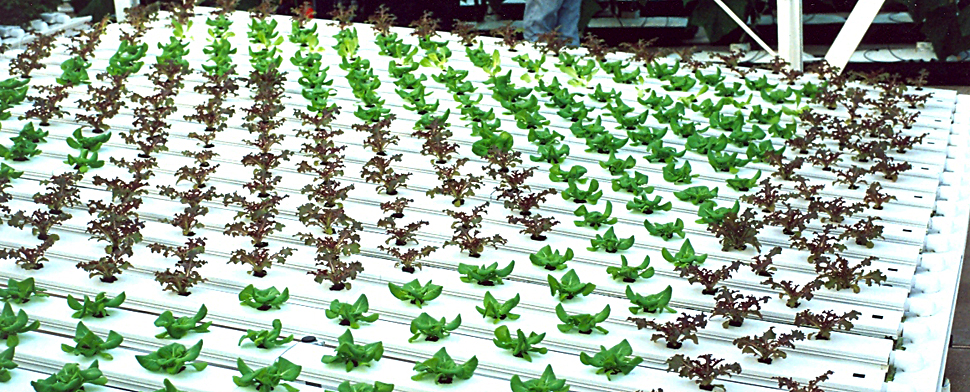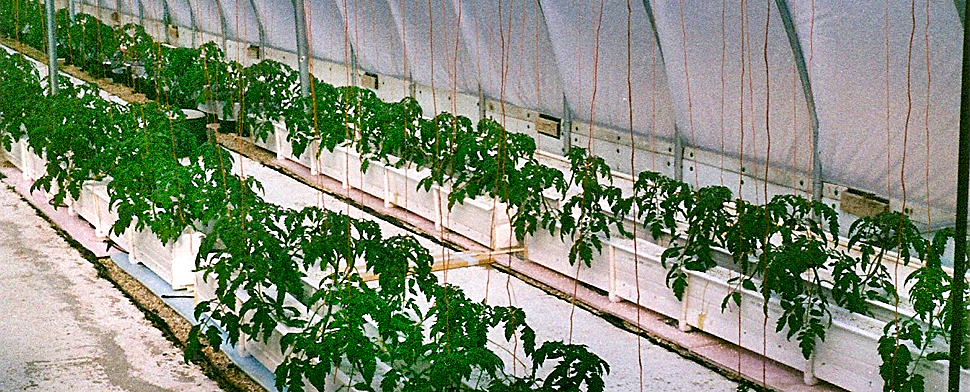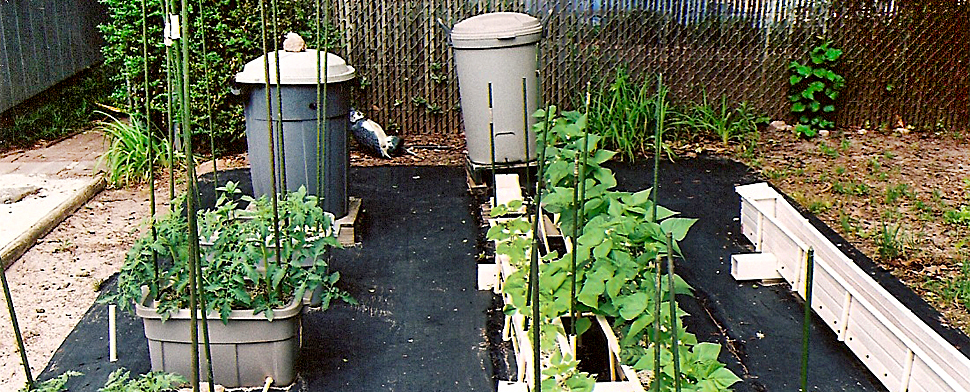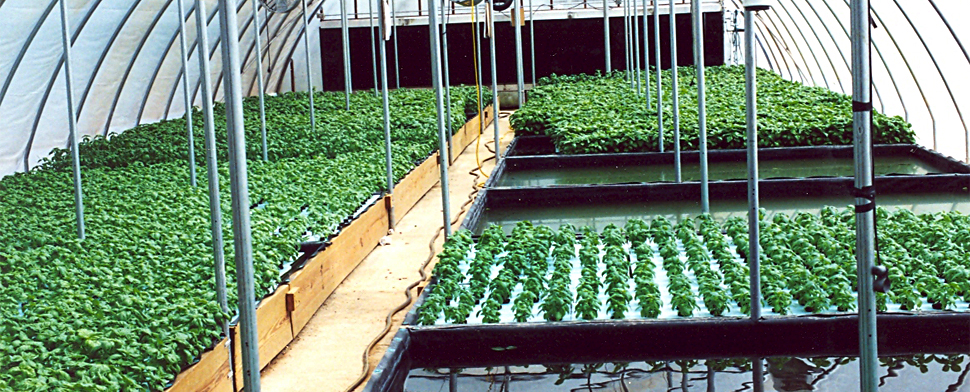The concentration of elements, both essential and non-essential, in a nutrient solution formulation are normally expressed in parts per million, best known by its acronym, ppm. In metric units, ppm is equivalent to milligrams per liter, its acronym being mg/L. A frequently used measurement for evaluating the overall elemental content of a nutrient solution, or that being retained in a rooting medium, is electrical conductivity, its acronym being EC. Its unit of measurement is the SI unit, Siemens per meter (S/m). The units of measure for the EC value can be confusing as there has been a change in designation from milliohms/centimeter (mmho/cm) to Siemens. The relationship among EC measurement terms are: 1 S/m = 1 mS/cm = 1000 uS/cm = 1 mmho/cm. Another value that defines the elemental content of a solution is Total Dissolved Solids, its acronym being TDS. The relationship that exists between EC and TDS is given by the following formula: EC (S/m) x 640 = TDS (mg/L, ppm). The conversion of EC to TDS units depends on the elemental composition of the sample, the conversion factor varying between 0.54 and 0.96. Typically the conversion factor assumes that for sodium chloride (NaCl), its 1 S/m value is equivalent to 0.64 mg NaCl per kilogram (kg) of water. The Hoagland-Arnon No. 1 nutrient solution formulation has an EC of 2.7 S/m. Therefore, using the NaCl conversion factor, the calculated TDS value is 1728. However, the actual TDS value is 2164 which illustrates what effect the “salt index” of the reagents used to formulate the nutrient solution. Therefore, for nutrient solution conversions of an EC measurement to TDS, the conversion factor should be 800 rather than 640, although there may be some variance depending on the reagents used in the nutrient solution formulation. An EC measurement is frequently used by hydroponic growers as a means of adjusting their nutrient solution after a period of use, using a “compensating solution” based on an assumption of elemental use in order to bring the major nutrient elements in solution back close to their initial concentrations. Over a period of time, these EC measurements may prove to be misleading as to what the actual concentrations of the various major nutrient elements are. Therefore, periodic laboratory analysis of the nutrient solution to determine what the actual elemental concentrations are is required. When growing plants hydroponically, one of the major uses of an EC measurement is for determining the total ion concentration, frequently referred to as “salt,” of the retained nutrient solution in the rooting medium, most commonly used when the rooting medium is perlite, rockwool or coir. Such an EC measurement can be used as an indicator when water leaching is required to reduce the “salt” content of the retained solution. As the “salt” content increases, the ability of plant roots to absorb water decreases, and therefore plants will wilt when exposed to high atmospheric demand conditions. At what EC level water leaching is required will vary with rooting medium as well as the plant species being grown. It is becoming increasingly evident that a nutrient solution formulation and its associated use factors (volume applied with each application and frequency of application) will determine at what rate elemental ion accumulation in the retained solution within the rooting media will occur. The greater the water-holding capacity of the rooting medium, the more dilute should be the nutrient solution formulation as well as use factors applied that will minimize ion accumulation, and therefore, either reduce the frequency for water leaching the rooting medium, or the best option being to eliminate this requirement. One needs to be aware that there exists confusing information regarding EC and TDS measurements and the units used to define these values. Therefore, one needs to verify the veracity of the information and values given before applying and making decisions on that given information.
Written by admin
![]()
Dr. J. Benton Jones has written extensively on the topics of soil fertility and plant nutrition over his professional career. After obtaining a B.S. degree in Agricultural Science from the University of Illinois, he served on active duty in the U.S. Navy for two years. After discharge from active duty, he entered graduate school, obtaining M.S. and Ph.D. degrees from the Pennsylvania State University in agronomy. For 10 years, Dr. Jones held the position as research professor at the Ohio Agricultural Research and Development Center (OARDC) in Wooster. During this time, his research activities focused on the relationship between soil fertility and plant nutrition. In 1967, he established the Ohio Plant Analysis Laboratory.
Joining the University of Georgia faculty in 1968, Dr. Jones designed and had built the Soil and Plant Analysis Service Laboratory building for the Georgia Cooperative Extension Service, serving as its Director for 4 years. During the period from 1972 and his retirement in 1989, Dr. Jones held various research and administrative positions at the University of Georgia. Following retirement, he and a colleague established Micro-Macro Laboratory in Athens, Georgia, a laboratory providing analytical services for the assay of soils and plant tissues as well as water, fertilizers, and other similar agricultural substances.
Dr. Jones was the first President of the Soil and Plant Analysis Council and then served as its Secretary-Treasurer for a number of years. He established two international scientific journals, "Communications in Soil Science and Plant Analysis" and the "Journal of Plant Nutrition", serving as their Executive Editors during the early years of publication.
Dr. Jones is considered an authority on applied plant physiology and the use of analytical methods for assessing the nutrient element status of rooting media and plants as a means for ensuring plant nutrient element sufficiency in both soil and soilless crop production settings.
View all posts by: admin
No Comments Yet.

